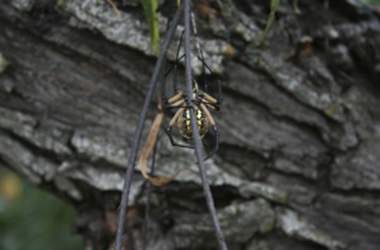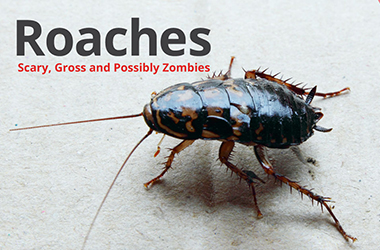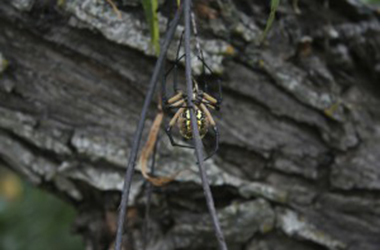Have a Pest Expert Tip Problem?
Or call us 0692063009
What are They and What To Do About Them?
A house-dwelling insect, the Lepisma saccharina, more commonly known as the Silverfish or bristletail, derives its name from several characteristics such as its silver/gray exoskeleton and fish-like habit of moving at a rapid pace, interspersed with short intervals of stopping or pausing. The scientific name (Lepisma saccharina) lends itself to the insects primary diet of sugar and starch filled items. These guys are addicted to carbs! This species of insect dates back millions of years and tends to have a prehistoric or fossil like appearance with its long antennae and scale like exterior.
Considered more of a nuisance than anything else, the presence of one or two silverfish in your home could mean that there are more of them lurking behind the scenes. The biggest complaint of the Silverfish is their destructive feeding habits, often ruining items in the home such as wallpaper, books and magazines, soaps and shampoos, clothes and much more.
A Behind the Scene look at the Silverfish
A bit of a sneaky insect, Silverfish are mostly nocturnal and do a great job at hiding. With a high reproduction rate, preventative measures should be taken once youve spotted a silverfish in order to avoid a full blown infestation. Drawn to dark areas, the silverfish will make its home behind wallpaper, in dark closets and behind bookshelves, inside window and door frames and behind baseboards.
The biggest error that homeowners make is not taking action early on to get rid of these insects as their hide and seek habits can allow for an escalation of an existing problem. If you have noticed yellow stains on your fabric, or small holes in boxes or wallpaper, chances are while you were sleeping these insects were already at work!
Characteristics of the Silverfish
As small and harmless looking as they are, the Silverfish can be a tough little insect as it can survive in most environments and can go extensive periods without food. Showing preference to more humid conditions, Silverfish are also somewhat difficult to get rid of as they move around fairly quickly, making their elusive nature quite frustrating to many homeowners. Even though these little guys dont have wings, youd be surprised at how quickly they appear and reappear in different areas of your home.
The most common of the three species of Silverfish is:
Lepisma saccharina (regular Silverfish) is the most common variety usually measuring up to a ½ inch in length. Their bodies have a consistent silvery sheen with no markings on them. Youll find these guys near areas of high moisture, and lower level spaces such as basements.
Other traits of the silverfish include:
- Flattened, carrot shaped body with 3 noticeable tails on the rear
- Wingless with a hard exoskeleton
- 2 long, slender antennas on the head
- Long life cycle with egg to adult development taking anywhere from 3 months to 3 years.
- Prefers a moist climate with a high humidity
- Adults lay anywhere from 5-50 eggs, usually near food sources
- Consumes items high in carbohydrates and protein such as glue in bookbindings, silk fabrics, dry foods such as dried meat and cereal, paper and cardboard.
Where to find Silverfish in your home
Since the Silverfish is somewhat of an elusive creature, more often than not youll spy signs of its existence rather than the insect itself. Their feeding habits will leave behind evidence through small holes in your wallpaper or in boxes you may have lying around, or even by yellowish stains on fabric. You may also notice evidence of their feces, usually mistaken for dust, or through the shedding of their cast skins. If you happen to catch glimpse of a silverfish, more than likely you will spot them in areas that are dark or have moisture such as:
- Under sinks
- Bathrooms/bathtubs or laundry rooms
- Attics
- Basements
- Storage rooms
- Behind closets and bookshelves
- Garages and sheds
Additionally, items such as boxes, cardboard or even furniture can be source for infestation if either eggs or adult silverfish were attached to these, and brought into the home.
Control and Prevention
Here are some tips to help control the silverfish population in your home:
- Since they prefer an environment with a high humidity and high temperature, lowering the temperature in your home can help to repel them from settling in and reproducing.
- Use a dehumidifier or fan in areas of the house more prone to moisture, such as basements.
- When moving furniture or boxes into your home, carefully inspect in and around these items to ensure that there are no signs of silverfish (either eggs or adults). This is particularly helpful when moving boxes from a garage or shed into your home.
- Dont give silverfish something to snack on! If possible, eliminate sources of food like old papers and books, as well as unused clothes or fabric that may be left lying around.
- Make sure to caulk and seal any cracks that may be found around windows or doors on the exterior of your home. This will help to keep them from entering.
- Repair or replace wallpaper that is torn as this makes for an inviting space for silverfish to inhabit.
Hiring a professional to address a silverfish problem is the most effective method, as Do It Yourself solutions such as traps or insecticides only target individual insects and not the potentially larger issue at hand. Since these insects reproduce quickly, eliminating them at their source is important. Your Truly Nolen pest professional can effectively assess the problem and provide solutions for treating both eggs and adult silverfish to prevent future infestations.


